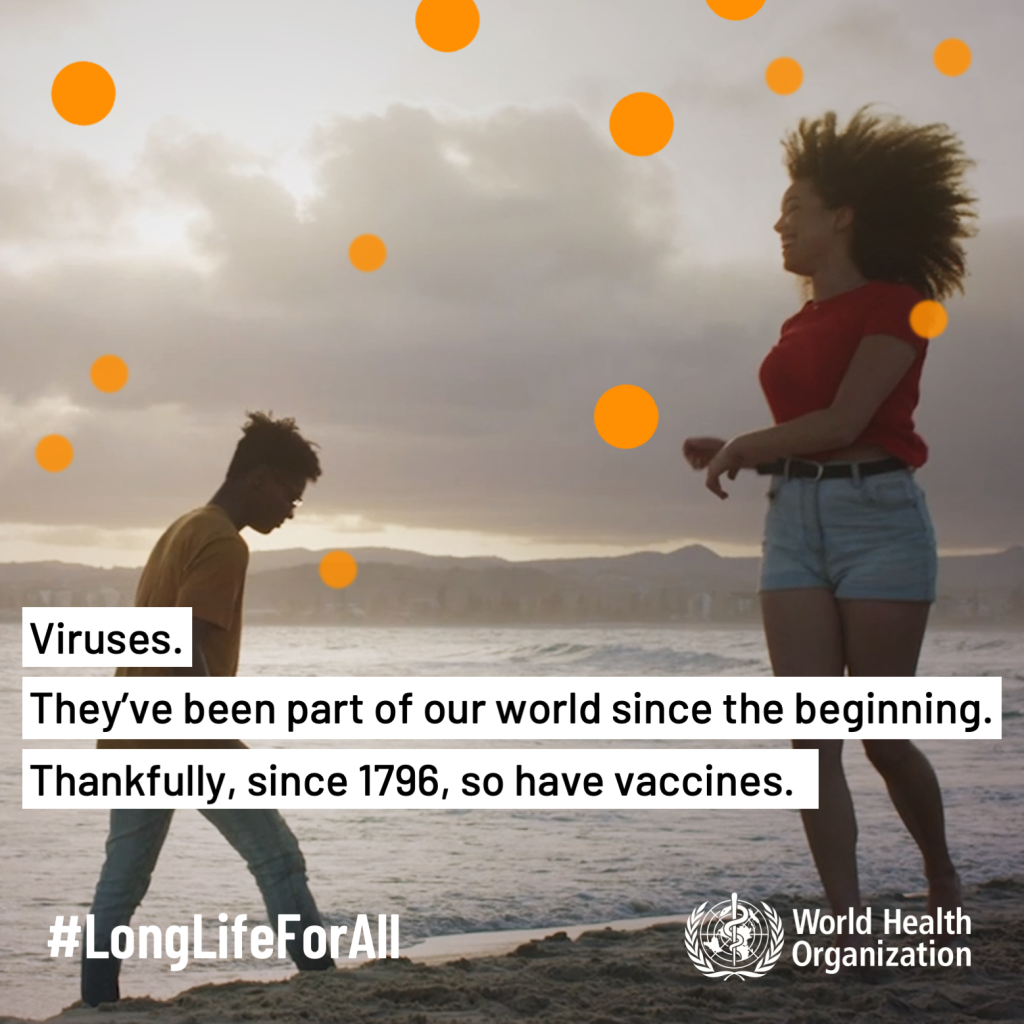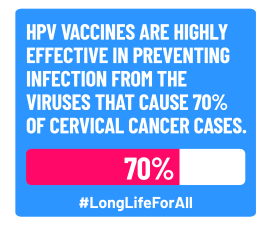Prevention is better than cure and vaccines are the medical example of this statement. In the centuries since their introduction, they have saved millions of lives. Most recently we have seen their remarkable impact on the COVID-19 pandemic by reducing deaths and complications. When we think of vaccines, we usually think about infectious disease, for example, childhood measles or the yearly flu. But vaccines, which stimulate our own immune system to fight disease, have a major role to play in cancer prevention too and it is important understand precisely why.

The reason for this, is that some cancers are caused by viruses. The human papilloma virus (HPV) is an example. The HPV virus, like many others have live alongside us. Like all viruses that infect people, it works by getting into our cells, and using the machinery of our cells to make more copies of the virus, which can then spread to more cells, where it does the same thing.
There are almost 200 different HPV viruses. These viruses are given different numbers, for example. HPV-6, HPV-11. Most of these are relatively harmless, causing no obvious symptoms, and the body’s own immune system can kill them, and clear them from the body within a couple of years. But some of the HPV viruses do cause problems, such as skin warts and verruca’s (small lumps on the skin), commonly caught in swimming pools. These viruses are usually spread by skin-to-skin contact.
All of the HPV viruses affect the skin cells (called epithelial cells), but different HPV viruses infect skin cells at different places in the body. For example, HPV-6 and HPV-11 infect skin cells of the vagina, penis, and anus and are responsible for genital warts, a sexually transmitted infection.
These are unpleasant, but are not life threatening. Other HPV viruses are defined as ‘high-risk’. These HPV infections stay for a long time and slowly begin to cause lasting, destructive changes to the skin cells that they infect. Over time, these changes add up and can result in the cells changing to cancer cells.
 For most people infected with even a high-risk HPV, the immune system eventually clears it. But for an unlucky few, the immune system cannot get rid of the virus and eventually it changes the cells so much that they become cancerous. There are two HPV viruses, HPV-16 and 18 that cause cancer in people and most of the Cervical cancer cases are caused by long-term infection by them. These viruses also cause a whole family of head and neck, anal, penile, vaginal, vulvar, and rectal cancers across the world. For this reason, HPV is known as an ‘oncovirus’ – an infection capable of causing cancer.
For most people infected with even a high-risk HPV, the immune system eventually clears it. But for an unlucky few, the immune system cannot get rid of the virus and eventually it changes the cells so much that they become cancerous. There are two HPV viruses, HPV-16 and 18 that cause cancer in people and most of the Cervical cancer cases are caused by long-term infection by them. These viruses also cause a whole family of head and neck, anal, penile, vaginal, vulvar, and rectal cancers across the world. For this reason, HPV is known as an ‘oncovirus’ – an infection capable of causing cancer.
Worldwide, HPV infection is responsible for an estimated 5.2% of all cancers. Grim as this statistic is, the HPV vaccination has had an incredible impact. By vaccinating young people against the cancer-causing strains of HPV itself, the virus is not able to take hold in the body.
This means that there is no long-term infection, nor the overproduction of skin cells and dampening of anti-cancer mechanisms within the skin cells that are otherwise caused by a HPV-16 or HPV-18 infection. The overall result is that those who get a HPV vaccine are immunised or protected from these getting cancers.
Since its introduction in 2006, the effects of the HPV vaccines have been astounding; thanks to the large numbers of young people who have been vaccinated. Australia is on track to eliminate cervical cancer by 2040. In the UK, HPV vaccination has seen sharp drops of over 90% in precancerous lesions, and a fall in cases of genital warts, against which the vaccine also prevents.
This effectiveness of the HPV vaccine means that a future without cancers linked to HPV viruses is possible, the painful presence of its cancerous legacy confined to the past. The success of the HPV vaccine also raises the prospect of further interventions; HPV is not the only cancer-causing virus.

An estimated 1-in-5 or 1-in-6 of human cancer cases are caused by such virus, with roughly 12% or 1-in-8 of all of cancers due to just 7 viruses. These viruses are the HPV, Epstein-Barr virus (EBV), Hepatitis B and C viruses, Human T-cell Lymphytropic virus-1 (HTLV-1), Human Herpesvirus-8 (HHV-8) and Merkel Cell Polyomavirus (MCPyV). In recent years, there has been considerable interest in producing vaccines against EBV, and there has been some success in creating MCPyV vaccines too.
Vaccines against existing viruses are not the only tool at our disposal against cancer. The breath-taking pace of immunotherapy research in recent decades has allowed scientists to create the first immunotherapy drugs designed to stimulate the patient’s own immune system to kill cancer cells.
Unlike preventative vaccines, these are given to people after a cancer is diagnosed, and work in different ways to vaccines. Most cancer cells have identifying molecules known as cancer-specific antigens, which are markers or signals on the cell which the body identifies as foreign to the body. The guiding principle is that the immune system can be trained to recognise these antigens or signals on the unwanted cancer cells and kill them.
While these are new and developing treatments over the last 10 years, there are already some approved immunotherapies being used in the clinic, including treatments for metastatic prostate cancer that are tailored from an individual patients’ cells. Another related treatment, Bacillus Calmette-Guérin (BCG) therapy, injects a weakened form of a the bacteria used in the tuberculous vaccine to stimulate the immune system in cases of bladder cancer, with a remarkably high success rate.
Cancer is not something we always think of when considering the incredible effects of vaccination on our well-being but they are already playing an important role in reducing the burden of cancer worldwide. This World Immunisation Week, we should remember the success of vaccinations in preventing cancer and the incredible future it further promises.









 Contact
Contact